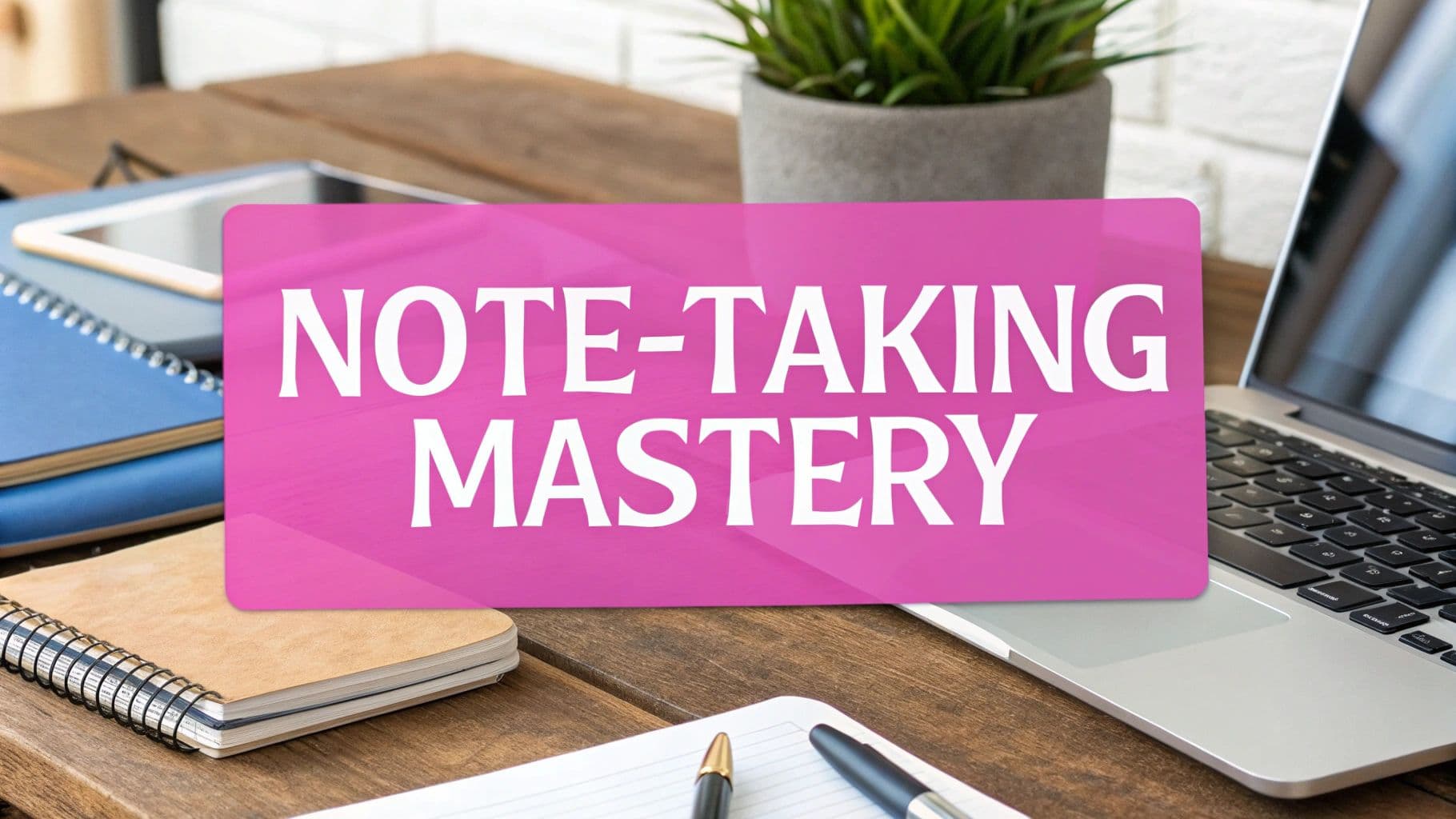
Best Note-Taking Methods: A Complete Guide for Academic Success
The Science Behind Effective Note-Taking
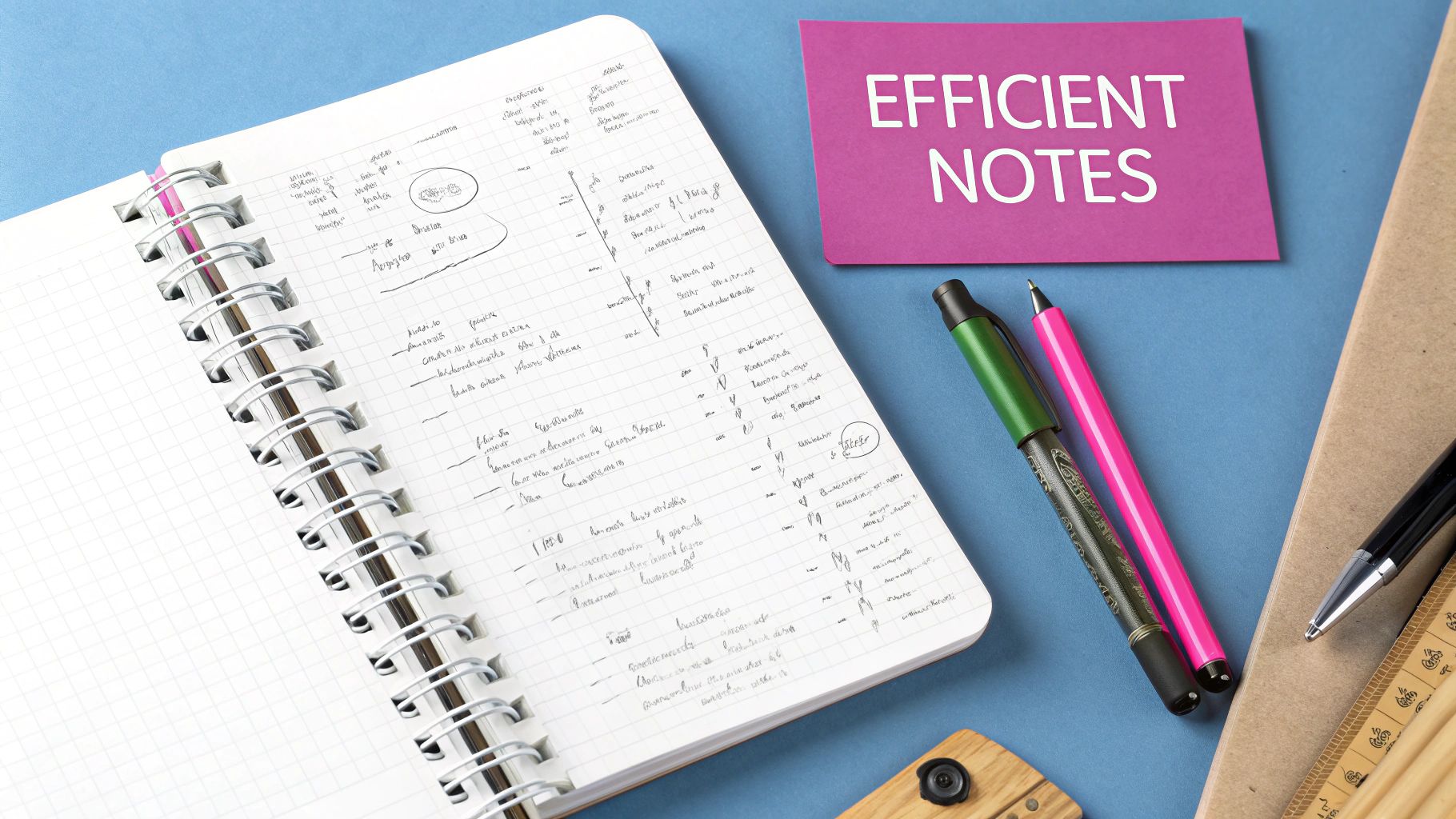
Note-taking is more than just writing down information – it's a skill backed by cognitive science that can dramatically improve how we learn and remember. Understanding the brain science behind note-taking helps explain why certain methods work better than others. When we take notes strategically, we can boost memory formation and retain information more effectively.
Active Recall: The Key to Retention
Active recall is one of the most powerful principles that makes note-taking work. Unlike passively re-reading notes, active recall forces you to pull information from your memory – similar to exercising a muscle. For example, after taking notes, try covering them up and quizzing yourself on the main points. This mental workout strengthens the neural connections storing that information. The more you practice retrieving knowledge actively, the better you'll remember it long-term.
How Different Note-Taking Methods Facilitate Active Recall
Various note-taking approaches tap into active recall in unique ways. The Cornell Method uses a structured format with a cue column that prompts you to recall the detailed notes beside it – essentially building in self-testing. The Outline Method organizes information hierarchically, encouraging you to remember supporting details under main concepts. Even simple techniques like summarizing notes in your own words after class boost retention since you have to mentally process and reconstruct the information. Each method creates opportunities to actively engage with the material.
Choosing the Best Note Taking Methods for You
With many proven note-taking methods available, finding your best fit depends on your learning style and the subject matter. Visual learners often excel with mind mapping, which can improve recall by 20% through its spatial organization. Students who prefer structured approaches may find the Outline Method more effective, potentially reducing study time by 25% through clear organization. The key is choosing methods that help you actively process information in a way that works for your brain. You might even combine approaches – using charts for data-heavy topics and mind maps for abstract concepts.
This foundation in the cognitive science of note-taking provides context for exploring specific methods in detail. Understanding how different techniques align with how our brains learn and remember helps you select approaches that will serve you best. The following sections will break down various methods with practical examples for putting them into action.
Mastering The Cornell Method for Academic Excellence
The Cornell Method is much more than a simple note-taking format – it's a systematic approach that fundamentally changes how students engage with their coursework. Developed by Professor Walter Pauk at Cornell University, this method has proven itself over decades as an effective system for organizing information and improving understanding.
Understanding the Cornell Note-Taking Structure
At its core, the Cornell Method uses a thoughtful page layout that serves specific learning purposes. The page is divided into four key areas: a header section at the top for topic identification, a wide column on the right for detailed lecture notes, a narrower left column for key terms and questions, and a summary space at the bottom. Each section works together, creating an organized system that helps students process information more effectively while they take notes.
Using the Cue Column for Active Recall
The left-hand cue column is what makes this method particularly powerful for learning. After class, students review their notes and create questions in this column that correspond to the main points. For instance, if your notes discuss the American Civil War, you might write "What economic factors led to the conflict?" in the cue column. By covering the main notes and attempting to answer these questions, students test their understanding and identify gaps in their knowledge. This process of self-testing strengthens memory and deepens comprehension of the material.
Creating Effective Summaries: More Than Just a Recap
The summary section serves a crucial purpose beyond simple note review. Here, students distill the main concepts into their own words, which requires them to think critically about what they've learned. Rather than just listing facts, a good summary connects ideas and explains their significance. For a lecture on the French Revolution, the summary might explain how various events influenced changes in French society and government, helping students grasp the bigger picture rather than just memorizing dates and names.
Adapting the Cornell Method for Different Subjects
One of the Cornell Method's strengths is its flexibility across different academic fields. In literature classes, the cue column might highlight themes, character relationships, or significant quotes. For science courses, it could contain formulas and key definitions. Math students often use the main section for worked examples while keeping relevant formulas and theorems in the cue column for quick reference. This adaptability makes the Cornell Method valuable for students in any field, as they can modify the basic structure to match their specific learning needs while maintaining the method's core benefits.
Building Visual Knowledge Maps That Actually Work
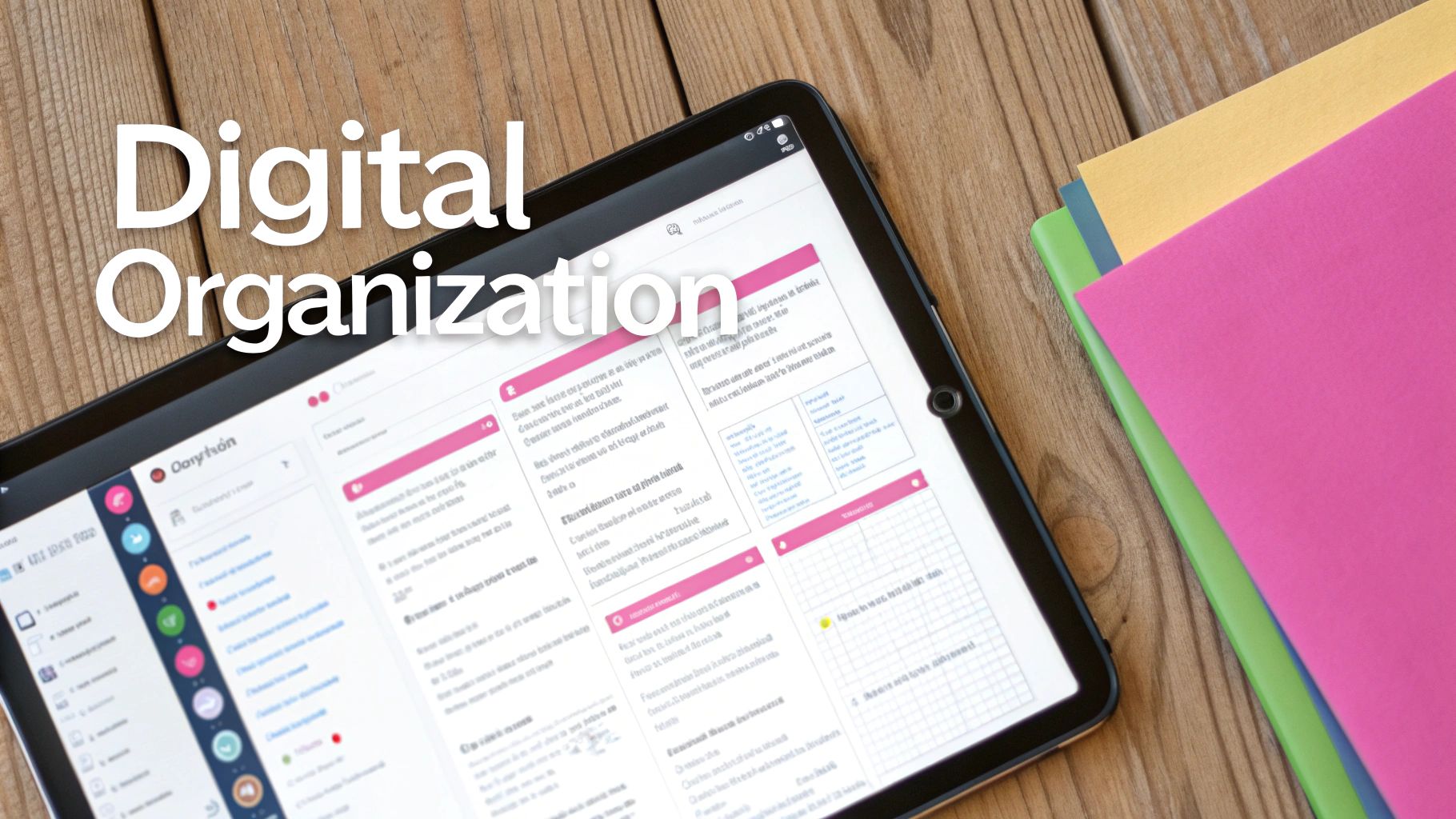
Traditional note-taking methods like Cornell and Outline work well for linear thinking, but visual learning engages our brain in a fundamentally different way. Mind mapping stands out as an especially effective visual note-taking technique when used properly. Unlike messy spider diagrams, strategic mind mapping helps organize information in a way that matches how our brains naturally connect and process ideas.
Why Visual Note-Taking Works
Research shows that visual note-taking methods can boost information recall by up to 20% compared to text-only notes. This improved retention happens because visual notes activate multiple areas of the brain simultaneously. For example, when you draw an image to represent a concept, you engage visual processing centers while physically drawing connections between ideas reinforces their relationships. This multi-sensory approach creates stronger memory pathways that make information easier to recall later.
Structuring Your Mind Maps for Maximum Impact
Creating an effective mind map starts with placing your main topic in the center of the page. From there, add major subtopics as branches radiating outward, using concise keywords and phrases rather than full sentences to keep the map focused. Each branch should clearly connect back to the central concept, forming a natural hierarchy – like a tree trunk with branches. The further out you go from the center, the more specific and detailed the information becomes.
Practical Examples: Applying Mind Maps Across Disciplines
Mind mapping works well across many different subjects and topics. When studying history, you might create a mind map about World War I with main branches for political alliances, economic factors, and key events. For biology, a mind map could break down cell components and show how different organelles work together. Literature students can map out novel themes, character relationships, and plot development. The visual format helps maintain perspective on both the big picture and important details.
Enhancing Your Mind Maps: Color, Imagery and Spatial Relationships
Strategic use of color, images, and space takes mind maps to the next level. Different colors help categorize and group related information. Simple icons and drawings make complex ideas more memorable – for instance, using a lightbulb to represent key insights or a gear to show processes. The physical arrangement matters too: placing connected concepts close together reinforces their relationship, while maintaining white space keeps the map clear and uncluttered. Together, these elements turn note-taking from a passive activity into an engaging process that improves both understanding and memory.
Structuring Notes for Rapid Information Processing
While visual note-taking methods like mind mapping work well for many situations, traditional text-based approaches remain essential, especially when you need to capture information quickly. The key is finding ways to take effective notes rapidly without missing important details. Let's explore how to optimize the Outline Method – a time-tested approach that helps you process and retain information efficiently.
The Power of Outlining for Speed and Clarity
The Outline Method mirrors how information naturally flows in lectures and presentations through its hierarchical structure. Main points sit at the left margin, with supporting details indented underneath – creating clear visual relationships between ideas. This makes it perfect for capturing sequential information in real-time while maintaining organization. When you review your notes later, the structured format helps you quickly locate specific points and understand how concepts connect.
Streamlining the Process: Abbreviations and Symbols
To write faster without sacrificing content, develop a personal system of abbreviations and symbols. Mark key points with an asterisk (*), flag items needing clarification with a question mark (?), and use standard shortcuts like "w/" for "with" or "e.g." for "for example." Create subject-specific abbreviations that make sense for your field. With practice, this shorthand becomes second nature and dramatically speeds up your note-taking.
Advanced Outlining Techniques: Numbering and Color-Coding
Add numbers to create clear reference points within complex topics – this helps you quickly find and connect related ideas. Color can also enhance organization: try using blue for main concepts, red for critical details, and green for examples. This visual system helps your brain process information faster by creating instant visual cues about the importance and relationship of different points.
Practical Applications: Adapting the Outline Method to Different Scenarios
The beauty of the Outline Method is its flexibility across different situations. In lectures, focus on capturing main arguments and evidence. During meetings, emphasize action items and decisions, using sub-points to note who's responsible and when things are due. When reading textbooks, outline key concepts and supporting details to improve retention. The method's basic structure remains consistent while adapting to your specific needs.
Choosing Your Perfect Note-Taking Strategy
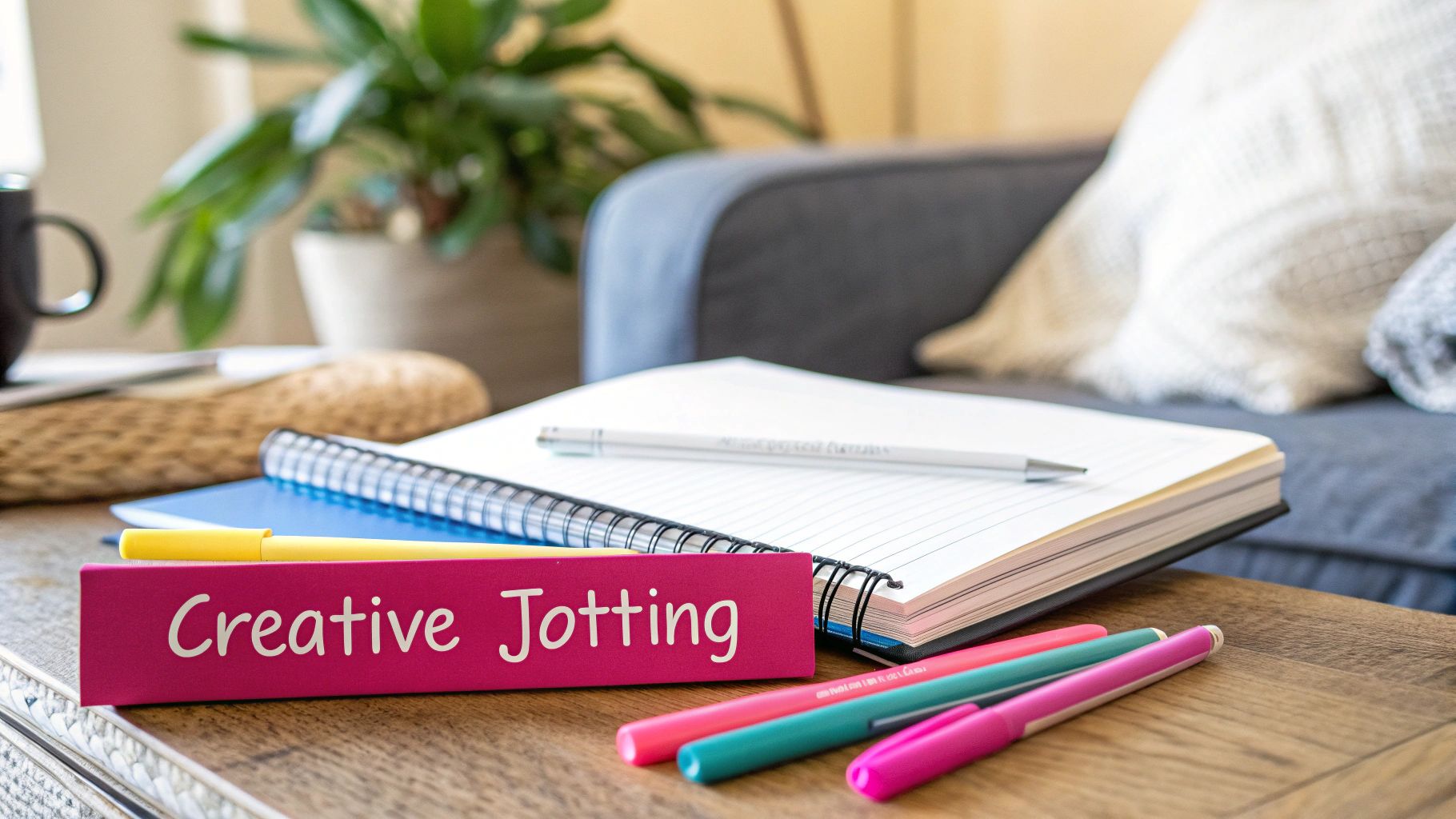
We've explored several effective note-taking methods, each offering distinct benefits. The key question now is: how do you select the right approach for your specific learning style and academic needs? The answer comes from understanding how different methods match your information processing style and the requirements of your courses. Let's explore how to find your ideal note-taking strategy.
Matching Methods to Your Learning Style
Each student processes information differently, so it makes sense that note-taking preferences vary too. Visual learners often excel with mind mapping, as it lets them see connections between ideas in a spatial format that mirrors their natural thinking patterns. Students who prefer clear organization typically find the Outline Method most helpful, as it presents information in a logical hierarchy of main points and supporting details. For those who learn best through physical engagement, handwritten Cornell Notes work well – the act of writing combined with the method's built-in review system supports active learning and memory retention.
Adapting to Different Subjects
Your choice of note-taking method should align with your subject matter. The Charting Method shines in courses like history or science where you need to organize and compare lots of facts. Its column format makes it easy to spot patterns and relationships, similar to how a spreadsheet organizes data. For subjects that deal with abstract concepts, like philosophy or literature, mind mapping helps you explore complex relationships between ideas. For example, when studying a play like Hamlet, you can create branches showing how themes of revenge connect to other elements like family relationships and moral questions.
Combining Methods for Maximum Impact
Rather than limiting yourself to one approach, consider mixing methods to get better results. You might start with an outline during lecture to capture main points, then create a mind map later to understand how concepts fit together. Or use Cornell Notes in class, then transfer key information into a chart for quick review before tests. This flexible approach lets you take advantage of each method's strengths while building a system that works for you.
Finding What Works Best for You: A Process of Experimentation
Finding your ideal note-taking strategy takes time and practice. Try different methods in various classes and notice which ones help you understand and remember information best. Don't hesitate to modify techniques or combine them to create something that fits your needs. Through this hands-on exploration and consistent practice, you'll develop effective note-taking habits that support your learning goals. As you refine your approach, you might want to explore how digital tools can enhance your note-taking – a topic we'll cover next.
Digital Tools and Traditional Methods: Finding The Right Balance
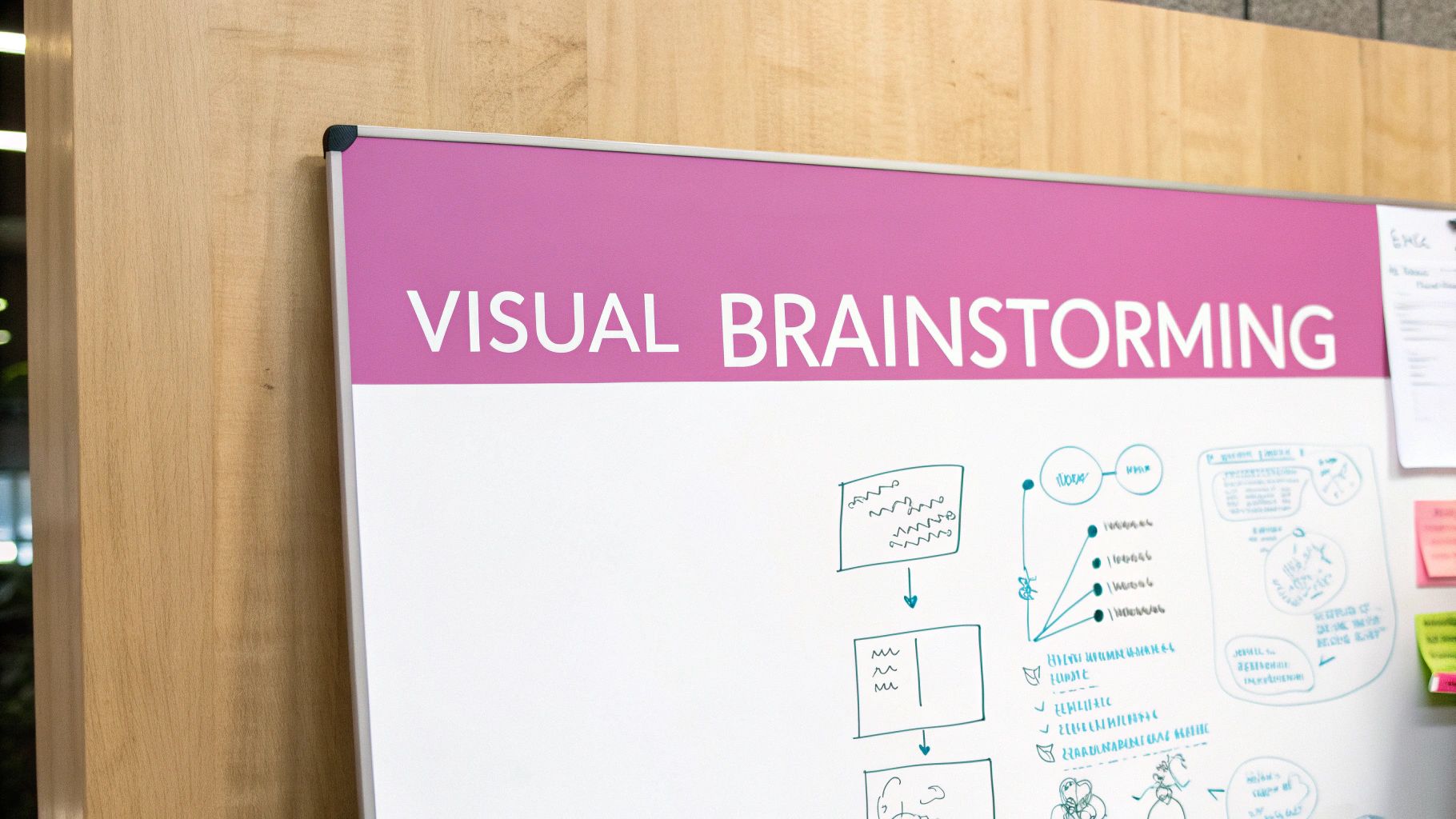
Taking effective notes requires finding the right mix of digital and traditional methods. While modern technology provides powerful note-taking capabilities, handwritten notes still offer unique benefits. Let's explore how to thoughtfully combine both approaches to create a system that works best for your learning style and needs.
The Benefits of Going Digital
Digital note-taking shines when it comes to organization and accessibility. With apps like Evernote and OneNote, you can easily search through notes, add tags, and group related information. Digital tools also enable features not possible with paper – recording audio during lectures, embedding images and videos, and collaborating with others in real-time. This flexibility helps capture and reference information in multiple formats.
The Enduring Power of Pen and Paper
Writing by hand engages your brain differently than typing. Research shows that the physical act of handwriting activates neural pathways that support memory and learning. Hand-drawn diagrams and mind maps help visual learners connect concepts spatially in ways that can be harder to replicate digitally. There's also something to be said for the focus that comes from putting pen to paper without digital notifications competing for attention.
Integrating Digital and Analog: Best Practices
A hybrid approach lets you maximize the strengths of both methods. Try taking handwritten notes during lectures to process information actively, then scan or type important points into a digital system later for easy reference and organization. This two-step process reinforces learning while creating searchable records.
Another effective strategy is using digital tools to collect reference materials while doing active recall and synthesis on paper. Save articles and slides digitally, but create handwritten summaries and practice questions to cement understanding. The physical writing helps encode information in memory.
Tool Recommendations and Implementation Techniques
For digital note-taking, Evernote and OneNote excel at organizing diverse content. Apps like Notability and GoodNotes work well for handwritten digital notes on tablets. The key is establishing a clear system – use consistent tags and folders to keep everything findable, and develop a routine for processing handwritten notes into your digital system.
To make the most of your combined note-taking approach, check out Notescast. This app transforms notes into engaging video content, helping consolidate information from both digital and handwritten sources into a dynamic study experience. Visit https://notescast.app/ to discover how Notescast can enhance your learning process.
